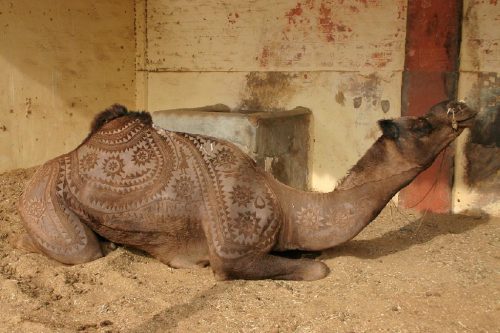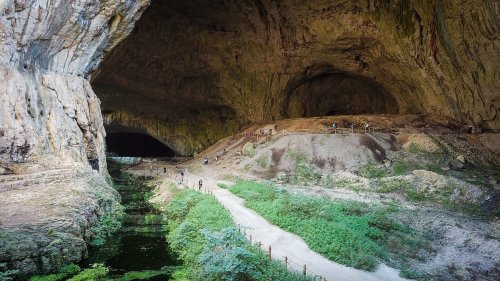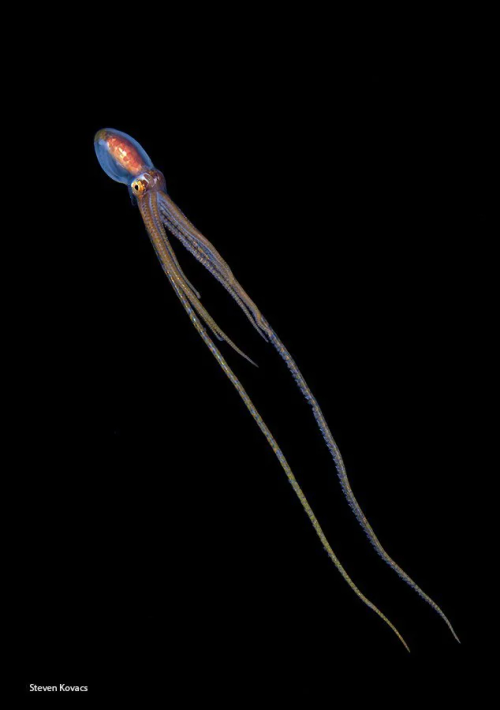
197 posts
.



























Живописные тропические закаты на острове Сайпан.
Остров Сайпан (Saipan) является самым крупным из Северных Марианских островов. Он расположен в Тихом океане на юге Марианского архипелага. Остров площадью 120 кв. км имеет вытянутую форму, все берега Сайпана причудливо изрезаны, на юго-восточной стороне дугообразный берег образует обширный морской залив, на южном выступе которого располагается международный аэропорт. На расстоянии около 300 км от восточного побережья острова расположен знаменитый Марианский жёлоб, самая глубокая океаническая впадина мира — 11 775 метров ниже уровня моря.
Атолл внесён в Книгу Рекордов Гинесса за самую постоянную температуру в течение года и суток. Этот показатель равен +27 °С, то есть тропическая летняя погода стоит 365 дней в году. Температура воды днем 25`C. Насекомых (мух, комаров) нет. Временами идут проливные дожди, когда за минуту можно промокнуть насквозь. Они обычно внезапно начинаются и также заканчиваются, длятся недолго, и дождь можно переждать под ближайшей пальмой.
Остров Сайпан небольшой, его можно обойти за 4 часа..На Сайпане, как и на прочих Марианских островах, нет городов в традиционном понимании этого термина. Центром острова считается Гарапан. Здесь самое большое скопление магазинов, кафе, ресторанчиков. А также здесь находится лучший пляж Сайпана - пляж Микро Бич.
Picturesque tropical sunsets on the island of Saipan.
Saipan Island is the largest of the Northern Mariana Islands. It is located in the Pacific Ocean in the south of the Mariana Archipelago. Island with an area of 120 sq. km has an elongated shape, all the shores of Saipan are intricately indented, on the south-eastern side the arched coast forms a vast sea bay, on the southern ledge of which the international airport is located. At a distance of about 300 km from the eastern coast of the island is the famous Mariana Trench, the deepest oceanic trench in the world - 11,775 meters below sea level.
The atoll is included in the Guinness Book of Records for the most constant temperature throughout the year and day. This figure is +27 °C, that is, tropical summer weather is 365 days a year. Water temperature during the day is 25`C. There are no insects (flies, mosquitoes). At times there are torrential rains, when you can get wet through and through in a minute. They usually start suddenly and also end, they don’t last long, and you can wait out the rain under the nearest palm tree.
The island of Saipan is small, you can get around it in 4 hours. On Saipan, like on the other Mariana Islands, there are no cities in the traditional sense of the term. Garapan is considered the center of the island. Here is the largest concentration of shops, cafes, and restaurants. And also here is the best beach in Saipan - Micro Beach.
Источник:/telega.in/c/krasivye_mesta_turizm,//primoravtotour.ru/guide/marianskie_ostrova/sajpan/,/www.tripadvisor.ru/Tourism-g60716-Saipan_Northern_Mariana_Islands-Vacations.html, //tour.shamora. info,/cttour.ru/tury/sajpan/charter-na-sajpan/,/dxnews.com/ru/kh0-jr1fkr/,/dxnews.com/ru/KH0-K6WP_Saipan/,/mandarin-travel.com/country/saypan/.
-
 angelayasmim liked this · 9 months ago
angelayasmim liked this · 9 months ago -
 northameicanblog liked this · 9 months ago
northameicanblog liked this · 9 months ago -
 dream-world-universe liked this · 10 months ago
dream-world-universe liked this · 10 months ago -
 coolvietnamlove liked this · 10 months ago
coolvietnamlove liked this · 10 months ago -
 adullam34 liked this · 10 months ago
adullam34 liked this · 10 months ago -
 starfisheaten liked this · 10 months ago
starfisheaten liked this · 10 months ago -
 wifeyyy2017 liked this · 10 months ago
wifeyyy2017 liked this · 10 months ago -
 iamblessedtruly liked this · 10 months ago
iamblessedtruly liked this · 10 months ago -
 ludmila199 liked this · 10 months ago
ludmila199 liked this · 10 months ago -
 arazhasret liked this · 10 months ago
arazhasret liked this · 10 months ago -
 mi-rin-ae liked this · 10 months ago
mi-rin-ae liked this · 10 months ago -
 234paul liked this · 11 months ago
234paul liked this · 11 months ago -
 shahmad1515 liked this · 11 months ago
shahmad1515 liked this · 11 months ago -
 gentilhommejfgh liked this · 11 months ago
gentilhommejfgh liked this · 11 months ago -
 jenna92 liked this · 11 months ago
jenna92 liked this · 11 months ago -
 angel-oriel liked this · 11 months ago
angel-oriel liked this · 11 months ago -
 jessiemoonsims liked this · 11 months ago
jessiemoonsims liked this · 11 months ago -
 lina-vas-dom liked this · 11 months ago
lina-vas-dom liked this · 11 months ago -
 imortellekim liked this · 11 months ago
imortellekim liked this · 11 months ago -
 huzur-un liked this · 11 months ago
huzur-un liked this · 11 months ago -
 vivencias-del-alma liked this · 11 months ago
vivencias-del-alma liked this · 11 months ago -
 gloriouslyscentedwizard reblogged this · 11 months ago
gloriouslyscentedwizard reblogged this · 11 months ago -
 gloriouslyscentedwizard liked this · 11 months ago
gloriouslyscentedwizard liked this · 11 months ago -
 alanbiya reblogged this · 11 months ago
alanbiya reblogged this · 11 months ago -
 alanbiya liked this · 11 months ago
alanbiya liked this · 11 months ago -
 imogen-fae liked this · 11 months ago
imogen-fae liked this · 11 months ago -
 alexforeverart liked this · 11 months ago
alexforeverart liked this · 11 months ago -
 semide liked this · 11 months ago
semide liked this · 11 months ago -
 anaempaz liked this · 11 months ago
anaempaz liked this · 11 months ago -
 williamskyw liked this · 11 months ago
williamskyw liked this · 11 months ago -
 smkovskiy liked this · 11 months ago
smkovskiy liked this · 11 months ago -
 vuonkhuya liked this · 11 months ago
vuonkhuya liked this · 11 months ago -
 kojj liked this · 11 months ago
kojj liked this · 11 months ago -
 deepestreviewpeanut-blog liked this · 11 months ago
deepestreviewpeanut-blog liked this · 11 months ago -
 free0spirit liked this · 11 months ago
free0spirit liked this · 11 months ago -
 alpenlyriker liked this · 11 months ago
alpenlyriker liked this · 11 months ago -
 thethirdman8 liked this · 11 months ago
thethirdman8 liked this · 11 months ago -
 110car8s liked this · 11 months ago
110car8s liked this · 11 months ago -
 santo2bme liked this · 11 months ago
santo2bme liked this · 11 months ago -
 linalayanhd liked this · 11 months ago
linalayanhd liked this · 11 months ago -
 naser1963 liked this · 11 months ago
naser1963 liked this · 11 months ago -
 nevzatboyraz44 liked this · 11 months ago
nevzatboyraz44 liked this · 11 months ago -
 myoacer reblogged this · 11 months ago
myoacer reblogged this · 11 months ago -
 myoacer liked this · 11 months ago
myoacer liked this · 11 months ago
More Posts from Vestaignis




















В Индии фестиваль верблюдов – одно из самых красивых и запоминающихся событий в стране. Проходит фестиваль в индийском городе Биканер в штате Раджастан. Биканер находится в пустыне Тар и знаменит тем, что именно в нем расположена единственная в Индии ферма верблюдов.
Изюминка этого праздника - оригинальный верблюжий карвинг. Карвинг по шерсти (так называется художественная стрижка верблюдов) - это искусство, которое требует не только высокого уровня профессионализма и определенных навыков, но и нескончаемого терпения. Верблюдов стригут особым образом, создавая на теле изысканные узоры. На создание такой оригинальной прически хозяину животного нужно около трех лет. Первые два года, пока шерсть верблюда отрастает, ее только подравнивают и подготавливают. А на третий год, когда шерсть вырастает нужной длины, перед началом фестиваля ее аккуратно выстригают в виде различных орнаментов на спине, боках и шее верблюда. Причем делается все это только вручную, с помощью обыкновенных ножниц.
Некоторые счастливые владельцы не останавливаются и на этом – они подкрашивают выборочно кончики волос в более темный цвет, чтобы рисунок выглядел эффектнее и рельефнее. Так получается настоящее произведение искусства, живой ковер с узорами удивительной красоты. Для конкурса красоты верблюдов также украшают различными красочными аксессуарами.
In India, the camel festival is one of the most beautiful and memorable events in the country. The festival is taking place in the Indian city of Bikaner in the state of Rajasthan. Bikaner is located in the Thar desert and is famous for the fact that it is the only camel farm in India.
The highlight of this holiday is the original camel carving. Wool carving (the so-called artistic camel shearing) is an art that requires not only a high level of professionalism and certain skills, but also endless patience. Camels are sheared in a special way, creating exquisite patterns on the body. It takes about three years for the owner of the animal to create such an original hairstyle. For the first two years, while the camel's hair grows, it is only trimmed and prepared. And in the third year, when the wool grows to the desired length, before the start of the festival it is carefully cut in the form of various ornaments on the camel's back, sides and neck. Moreover, all this is done only manually, using ordinary scissors.
Some happy owners do not stop there either – they selectively tint the ends of their hair in a darker color so that the pattern looks more spectacular and more relief. So it turns out to be a real work of art, a living carpet with patterns of amazing beauty. Camels are also decorated with various colorful accessories for the beauty contest.
Источник:/ekabu.ru/160021-verblyuzhiy-bodi-art-18-foto.html, /astv.ru/club/blog/utro/6jXTE7Xkd02AQEOfZY-8Fg, /multiurok.ru / blog/nieobychnyi-vid-iskusstva-vierbliuzhii-bodiart.html, //dzen.ru /a /YndBAXlNcTNWFXvW.



























Озеро Сукко (Кипарисовое озеро), или Голубое озеро — одна из самых популярных и фотогеничных локаций в окрестностях Анапы. Удивительные деревья с узловатыми корнями и приятным смолистым ароматом растут здесь прямо из воды. О происхождении названия озера существует множество предположений. С адыгейского топоним можно перевести как «водоем кабанов». Существует также вариант трактовки «Сукко» как «су» — вода и «къко» – свинья или дельфин. Озеро в Сукко было создано искусственно путем строительства плотины на реке, впадающей в Черное море, что привело к затоплению долины. Этот водоем занимает площадь всего 8 гектаров. Высота Кипарисового озера - 40 м над уровнем моря. Особую известность озеру принес уникальный эксперимент, проведенный в 1934–1935 годах, когда были посажены 32 болотных кипарисов, которые успешно прижились и выросли. Изначально кипарисы были посажены на сухой земле, однако из-за значительных изменений рельефа территории они со временем оказались в воде. В периоды засухи уровень воды в озере понижается, обнажая обширную корневую систему деревьев. Кипарисы достигают внушительной высоты почти в 30 метров, а их стволы могут быть шириной до полуметра. Роща прекрасна практически в любой сезон: весной свежая листва хвойных деревьев нежно-зелёная, летом приобретает более тёмный и насыщенный оттенок, а осенью полыхает ярко-оранжевым или красным цветом. К зиме деревья полностью сбрасывают листву, обнажая ветвистые кроны — в чём тоже есть своя красота.
Из-за обилия известняковых отложений в зависимости от освещения озеро Сукко может менять цвет от нежного молочно-голубого до насыщенного бирюзового. Голубое озеро не только известно своими кипарисами и кристально чистой водой, но и окружающей его природой. Водоем находится среди лесопарка с дубами и грабами, а с северной стороны его окружают склоны горы Широкая. Рядом также расположена можжевеловая роща, создающая лечебный воздух в этой местности.
Lake Sukko (Cypress Lake), or Blue Lake, is one of the most popular and photogenic locations in the vicinity of Anapa. Amazing trees with knotty roots and a pleasant resinous aroma grow here directly from the water. There are many speculations about the origin of the name of the lake. From the Adyghe toponym can be translated as “pond of wild boars.” There is also an option to interpret “Sukko” as “su” - water and “kko” - pig or dolphin. The lake in Sukko was created artificially by building a dam on a river flowing into the Black Sea, which led to flooding of the valley. This reservoir covers an area of only 8 hectares. The height of Cypress Lake is 40 m above sea level. The lake became especially famous due to a unique experiment conducted in 1934–1935, when 32 swamp cypress trees were planted, which successfully took root and grew.Initially, the cypress trees were planted on dry land, but due to significant changes in the terrain, they eventually ended up in water. During periods of drought, the lake's water level drops, exposing the trees' extensive root systems. Cypress trees reach an impressive height of almost 30 meters, and their trunks can be up to half a meter wide. The grove is beautiful in almost any season: in the spring, the fresh foliage of coniferous trees is soft green, in the summer it acquires a darker and richer shade, and in the fall it blazes with bright orange or red. By winter, the trees completely shed their leaves, revealing branched crowns - which also has its own beauty.
Due to the abundance of limestone deposits, depending on the lighting, Lake Sukko can change color from delicate milky blue to rich turquoise. Blue Lake is not only famous for its cypress trees and crystal clear water, but also for the nature that surrounds it. The reservoir is located among a forest park with oaks and hornbeams, and on the northern side it is surrounded by the slopes of Mount Shirokaya. There is also a juniper grove nearby, which creates healing air in this area.
Источник: https://kukarta.ru/ozero-sukko,//ezhevika-travel.ru /tur/ozero-sukko-foto,/turistexpert.ru/rossiya/anapa/kiparisovoe-ozero/,//kiparisovoe-ozero.ru,/blijehotel.ru/articles/kiparisovoe-ozero/, /experience.tripster.ru/sights/kiparisovoe-ozero-sukko/, /www.tripadvisor.ru/Attraction_Review-g3226223-d2331079-Reviews-Sukko_Lake-Sukko_Krasnodar_Krai_Southern_District.html.




























Замок Миранда (Château Miranda)— замок 19-го века построенный в нео-готическом стиле в городе Сель, провинция Намюр, Бельгия. Строительство замка началось в 1866 году по проекту английского архитектора Эдварда Милнера. Замок был задуман как летняя резиденция семьи Liedekerke De Beaufort. Однако архитектор скончался до окончания постройки и замок достраивался уже без него. Окончание строительства произошло в 1907 году.Потомки старинного рода проживали там до Второй Мировой войны. Во время войны замок был оккупирован немецкими войсками.После войны владельцы решили перебраться во Францию, а их роскошный замок превратился сначала в детский дом, а с 1958 года - в дом отдыха для детей железнодорожников. Видимо, тогда он и получил свое второе название Chateau de Noisy (Шумный замок).
С 1991 года Миранда был заброшен, расходы на его содержание оказались непомерно высоки. Местный муниципалитет предложил взять их на себя, но семья отказалась, надеясь найти покупателя.Параллельно с поисками покупателя владельцем была подана просьба о сносе здания, в июле 2015 оно было получено. Средства на восстановление заброшенного замка требовались колоссальные, было организовано товарищество по спасению Миранды, но речь шла о сумме в 15-25 миллионов евро.Два года спустя покупатель так и не был найден, а отдать свой замок в дар государству не каждый способен...
"Замок превратился в руины и представляет собой реальную опасность для всех тех, кто незаконно вторгается в мою частную собственность" - так владелец объяснил уничтожение Miranda Castle.
Château Miranda is a 19th-century castle built in the neo-Gothic style in the town of Sel, Namur, Belgium. Construction of the castle began in 1866 according to the design of the English architect Edward Milner. The castle was conceived as the summer residence of the Liedekerke De Beaufort family. However, the architect died before the construction was completed and the castle was completed without him. The construction was completed in 1907. Descendants of the old family lived there until the Second World War. During the war, the castle was occupied by German troops. After the war, the owners decided to move to France, and their luxurious castle turned first into an orphanage, and since 1958 into a holiday home for children of railway workers. Apparently, it was then that it received its second name, Chateau de Noisy (Noisy Castle).
Since 1991, Miranda has been abandoned, the costs of its maintenance being prohibitive. The local municipality offered to take them over, but the family refused, hoping to find a buyer. In parallel with the search for a buyer, the owner submitted a request to demolish the building, which was received in July 2015. Colossal funds were required to restore the abandoned castle; a partnership was organized to save Miranda, but the amount in question was 15-25 million euros. Two years later, a buyer was never found, and not everyone is able to donate their castle to the state…
“The castle has turned into ruins and poses a real danger to all those who illegally invade my private property,” this is how the owner explained the destruction of Miranda Castle.
Источник:/poshyk.info/zabroshennye-zamki-mira/,/fishki.net/50746-zabroshennyj-zamok-chateau-miranda-52-foto.html,//dzen.ru/ a/ YWAhiQydDxQdRome,/steport.com/article/23/zabroshennyi-zamok-chateau-miranda,/pikabu.ru/story /zabroshennyiy_zamok _chateau _ miranda_gorod_sel_provintsiya_namyur_belgiya_5540122,/vk.com/album-43797049_205839158.























Пещера Деветашка считается одной из самых крупных в Болгарии и всей Европе. Она расположена на реке Осым, между селами Деветаки и Дойренци (Ловечская область). Пещера обнаружена лишь в 1921 году, а с 1996 года является охраняемым памятником природы. Ее протяженность составляет около 1,5 км, а входом служит гигантский проем 55 м в ширину и 35 м в высоту.
Пещера Деветашка поражает воображение туристов. Ее потолки высотой от 60 до 100 метров имеют многочисленные провалы, которые местные жители называют окнами. Они создают естественное освещение, но практически не нагревают пещеру. Поэтому здесь прохладно даже в знойные летние дни. Внутри протекает река, есть подземные озера, водопады, сталагмиты и сталактиты. В залах обитают летучие мыши, поэтому они закрыты с 1 ноября по 1 апреля, чтобы не мешать размножению животных.
В пещере обнаружены следы обитания древнего человека. Согласно археологическим исследованиям пещера служила убежищем людям с поздней палеолитической эпохи. Археологические раскопки обнаружили остатки из культурного слоя почти всех доисторических периодов. Рельефный слой толщиной от 0,3 до 5,5 м содержит остатки поселений разных эпох: палеолита(кремневые орудия мустьерских форм, позднепалеолитические изделия из кремня и костей); неолита (очаги с каменной основой, узкие каменные топоры, кремневые заточки и скребки, костяные лощила, шила и долота, керамику с резьбленными надписями); энеолита ( разрушенные жилища, печи, зернотерки,орудия из камня и костей, посуда с резной, рельефной и другой орнаментацией, антропоморфные фигуры); бронзового века (боевые топоры из бронзы, темнолощённые керамические изделия); железного века (бронзовые ножи, железное оружие).
Вторая мировая война оставила и здесь свой след. Во времена социализма пещера использовалась в качестве склада боеприпасов на случай военных действий, а также служила хранилищем нефтепродуктов. В пещере до сих пор остались следы в виде кругов с тех времен.
Немаловажной частью этого чудного места является разнообразие представителей фауны. В пещере обитают более сотни различных видов живности, некоторые из которых даже занесены в Красную книгу! В их числе 12 видов охраняемых земноводных (эскулап, полоз, тритон, древесные лягушки, черепахи Германа), около 80-ти видов птиц, 34 вида млекопитающих и 15 видов летучих мышей.
Devetashka Cave is considered one of the largest in Bulgaria and throughout Europe. It is located on the Osam River, between the villages of Devetaki and Doirentsi (Lovech region). The cave was discovered only in 1921, and since 1996 it has been a protected natural monument. Its length is about 1.5 km, and the entrance is a gigantic opening 55 m wide and 35 m high.
Devetashka Cave amazes tourists. Its ceilings range from 60 to 100 meters high and have numerous gaps, which locals call windows. They create natural light, but practically do not heat the cave. Therefore, it is cool here even on hot summer days. A river flows inside, there are underground lakes, waterfalls, stalagmites and stalactites. The halls are inhabited by bats, so they are closed from November 1 to April 1, so as not to interfere with the breeding of animals.
Traces of ancient human habitation were found in the cave. According to archaeological research, the cave has served as a shelter for people since the late Paleolithic era. Archaeological excavations have discovered remains from the cultural layer of almost all prehistoric periods. The relief layer, 0.3 to 5.5 m thick, contains the remains of settlements from different eras: Paleolithic (flint tools of Mousterian forms, Late Paleolithic objects made of flint and bones); Neolithic (hearths with a stone base, narrow stone axes, flint sharpenings and scrapers, bone polishes, awls and chisels, ceramics with carved inscriptions); Eneolithic (destroyed dwellings, ovens, grain grinders, tools made of stone and bones, dishes with carved, relief and other ornamentation, anthropomorphic figures); Bronze Age (battle axes made of bronze, dark-polished ceramics); Iron Age (bronze knives, iron weapons).
The Second World War left its mark here too. During socialism, the cave was used as an ammunition depot in case of hostilities, and also served as a storage facility for petroleum products. There are still traces in the cave in the form of circles from those times.
An important part of this wonderful place is the diversity of fauna. The cave is home to more than a hundred different species of living creatures, some of which are even listed in the Red Book! These include 12 species of protected amphibians (aesculapius, snake, newt, tree frogs, Hermann's tortoises), about 80 species of birds, 34 species of mammals and 15 species of bats.
Источник:/bulgariaexpert.ru/info/peschera-devetashka.php, /www. ntabulgaria.ru/blog/interesnye-mesta/peshhera-devetashka/, juicyworld.org/devetashka-cave/,/volimo-balkan.livejournal .com /450004.html,//meteo.by/around/c288c52491142c32.html, //www. tripadvisor.ru/Attraction_Review-g14037230-d4184576-Reviews-Devetashka_Cave-Devetaki_Lovech_Province.html,/bolgarskiydom .com/devetashka/.













Macrotritopus defilippi, широко известный как длиннорукий осьминог-лилипут или атлантический длиннорукий осьминог, является небольшим видом осьминогов, морских головоногих моллюсков отряда Octopoda.
Macrotritopus defilippi - это небольшой осьминог с относительно длинными руками и мантией длиной до 90 мм (3,5 дюйма). Как и у большинства осьминогов, цвет кожи может варьироваться. Обычно он либо однотонный, либо в крапинку и полностью соответствует цвету окружающей местности, песчаных равнин, на которых он обитает. Там, где субстрат содержит гравий или песок, крапчатый рисунок часто крупнее, на коже могут быть небольшие сосочки (мясистые выпуклости), а на руках - светлые и темные полосы. Этот осьминог также может зарываться в субстрат, не оставляя никаких визуальных следов своего местонахождения.
Личинки Macrotritopus defilippi плавают с вытянутыми лапками и, если их потревожить, взлетают с помощью реактивного двигателя, иногда достигая морского дна и ища нору, в которой можно спрятаться. Ночью они могут вести пелагический образ жизни, а днем - бентический, но, по-видимому, с возрастом становятся менее ночными. Когда взрослая особь осьминога передвигается, то делает это таким образом, что его поведение при плавании очень напоминает поведение донных камбал, обитающих в тех же водах.
Macrotritopus defilippi был обнаружен в Атлантическом океане, включая Карибское море, Средиземное море, северную часть Индийского океана и побережье Сомали.
Macrotritopus defilippi, commonly known as the long-armed midget octopus or Atlantic long-armed octopus, is a small species of octopus, marine cephalopods of the order Octopoda.
Macrotritopus defilippi is a small octopus with relatively long arms and a mantle up to 90 mm (3.5 in) long. As with most octopuses, skin color can vary. It is usually either monophonic or speckled and fully corresponds to the color of the surrounding area, the sandy plains on which it lives. Where the substrate contains gravel or sand, the speckled pattern is often larger, there may be small papillae (fleshy bulges) on the skin, and light and dark stripes on the hands. This octopus can also burrow into the substrate without leaving any visual traces of its location.
Macrotritopus defilippi larvae swim with their legs outstretched and, if disturbed, take off using a jet engine, sometimes reaching the seabed and looking for a hole in which to hide. They can lead a pelagic lifestyle at night and a benthic lifestyle during the day, but apparently they become less nocturnal with age. When an adult octopus moves, it does so in such a way that its swimming behavior is very similar to that of bottom flounders living in the same waters.
Macrotritopus defilippi has been found in the Atlantic Ocean, including the Caribbean Sea, the Mediterranean Sea, the northern Indian Ocean and the coast of Somalia.
Источник://t.me/+E4YBiErj0A8wOGUy,//news.miami.edu/stories/2019/06/winners-announced-in-rosenstiel-school-underwater-photo-contest.html,//ru.pinterest.com/pin/632966922633183935/,/octonation.com/octopedia/atlantic-longarm-octopus/,//pofoto.club/17356-glubokovodnyj-osminog-57-foto.html, //en.wikipedia.org/ wiki/ Macrotritopus_defilippi.